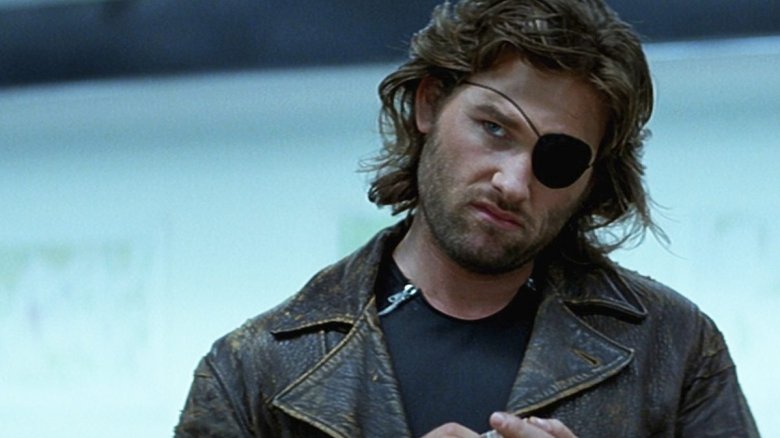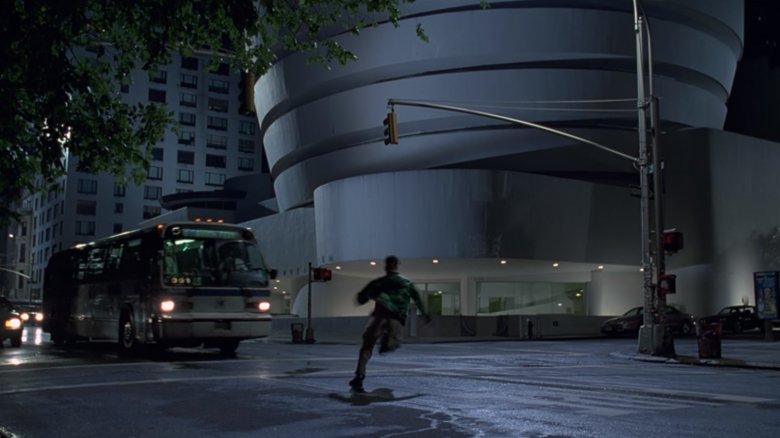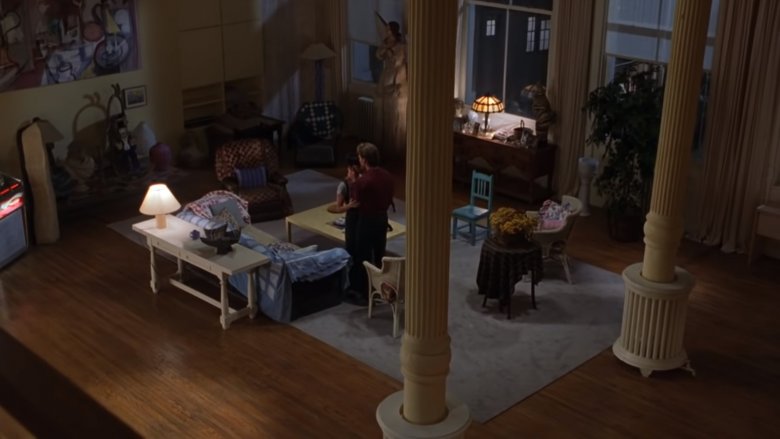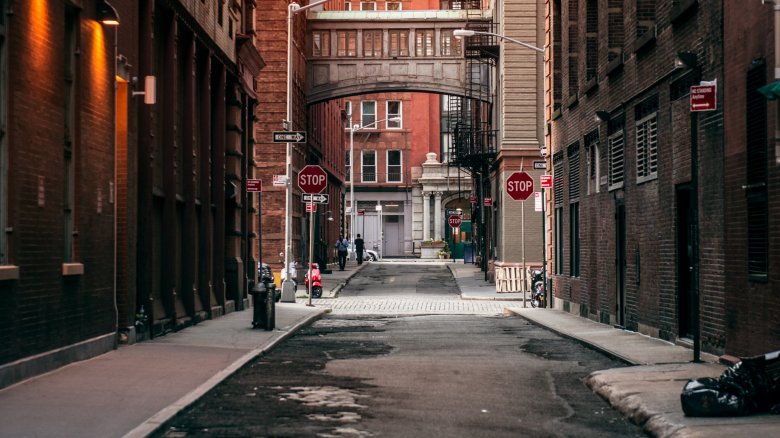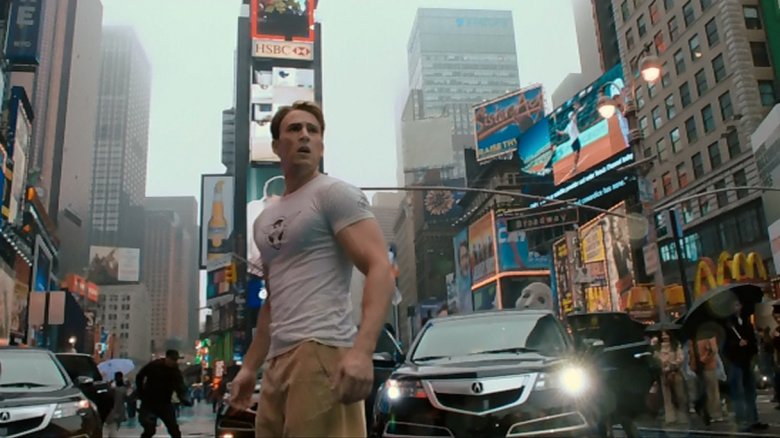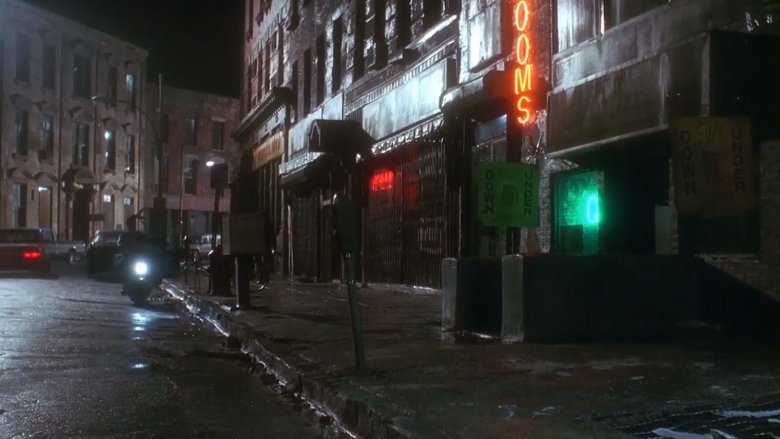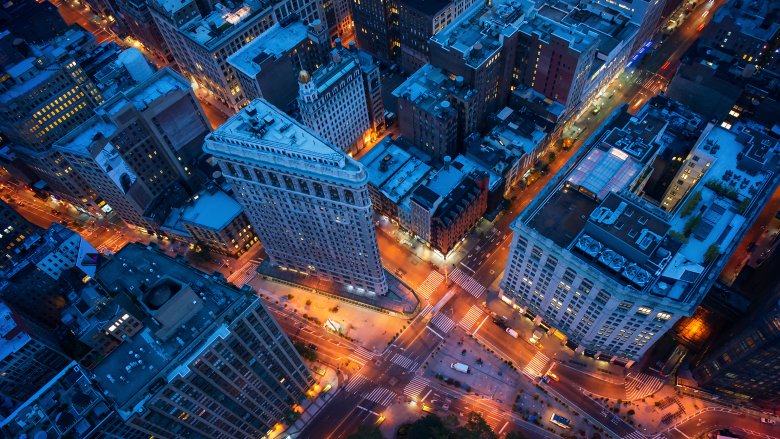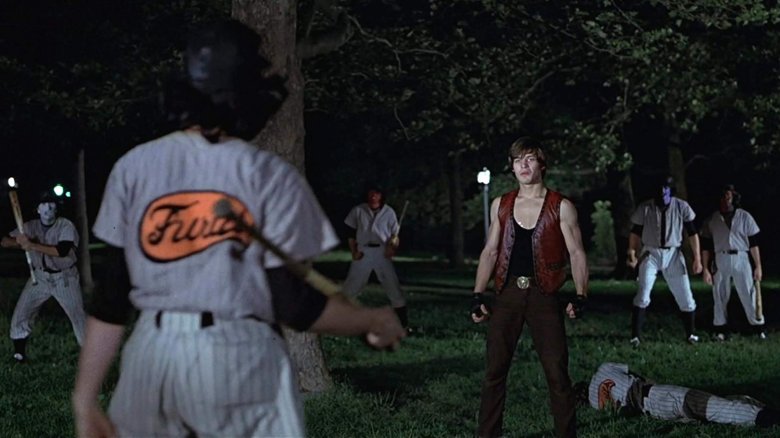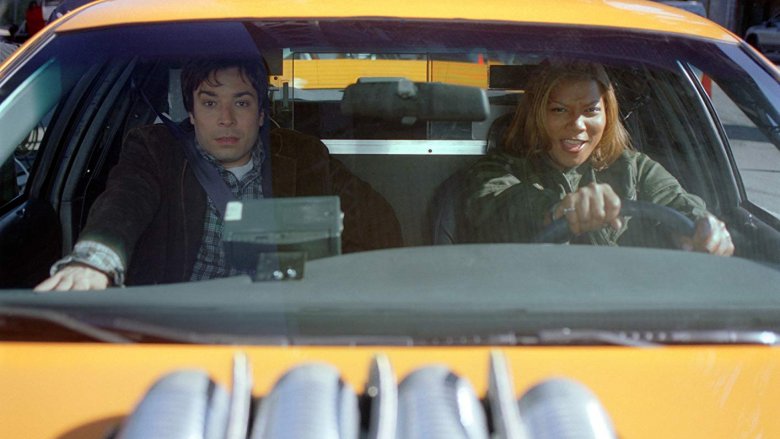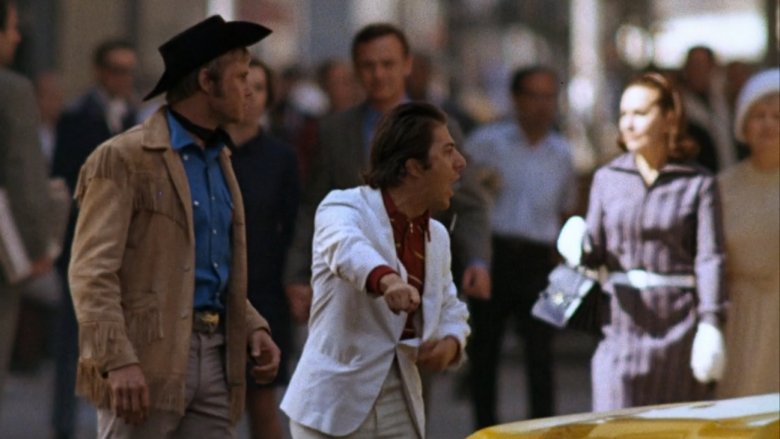Things Movies Always Get Wrong About NYC
It's no wonder why there are so many movies set in New York City. Always evolving and yet retaining a distinctive identity, full of old money and new technology, the idea of New York as a glamorous, exciting, and dangerous city has captivated filmmakers for as long as people have been making films.
There have been so many films set in the Big Apple that New York movies have become their own sub-genre. Like any genre, New York movies have their fair share of conventions, and unfortunately, over the decades these oft-repeated conventions have solidified into an alternate vision of the city that has basically nothing to do with reality.
Some New York movie myths stem from old stereotypes, some are the result of the practical realities of filmmaking, and some come from a simple desire to make things more dramatic. Regardless, a century of films set in NYC has codified this particular set of falsehoods. They are absurd, they are everywhere, and they're painfully easy to spot once you recognize them.
In the spirit of New Yorkers everywhere, we got places to be and no time to waste, so let's get started.
Everything is just around the corner from everything else
Manhattan has a ton of iconic locations that look great on film. Because of this, filmmakers often choose to set their New York scenes in recognizable places. This is usually fine to do, if you do it once. It becomes a problem when you film two scenes back-to-back in different New York landmarks. When you do that, viewers can double-check your geography, and the number of films that fail even the most basic test of where certain locations are in New York City relative to each other is staggering.
For instance, in this scene from Men in Black, Will Smith chases a bad guy from the Grand Central Terminal to the Guggenheim in seconds. There is a little bit of editing in there, which could suggest a slight time jump, but the filmmaking implies that these two locations are at most a couple blocks apart, when according to Google Maps, it's actually about a 50 minute walk.
Another example occurs in this scene from Cloverfield, when refugees fleeing from Times Square decide to leave the city by the iconic Brooklyn Bridge, despite the fact that the Williamsburg and Manhattan bridges are closer.
Most apartments are larger than a closet
In the world of movies, most starving artist or working-class New Yorker protagonists live alone in relatively spacious apartments. Sometimes, in movies like Big Daddy, the apartment will have a bit of an industrial look, as a way of indicating that our unemployed hero is at least nominally supposed to be struggling, but other films, like Ghost, don't even bother with this formality. Who knew that potters made so much money?
Everything in New York is expensive, but the most expensive thing of all is real estate. The real cost of renting a single-bedroom apartment in Manhattan is, on average, just over $3,000 a month! This means that most adults who live in New York, even ones with decent paying jobs, are financially strapped, and have to either live in tiny apartments, or share an apartment with multiple roommates.
This trope was actually finally called out in the trailer for the movie Isn't it Romantic, in which a real-life New Yorker who has been magically transported into a New York romantic comedy is startled by her disturbingly spacious apartment. Even her hospital room compares to a "Williams-Sonoma catalog."
Manhattan is mostly alleyways
Whenever a movie character needs to take a shortcut, hide some contraband, or meet up with a contact for some shady criminal dealings, where do they do it? Why, in one of Manhattan's famous alleyways, right? This one even took us by surprise, so prepare to have your mind blown.
Believe it or not, since the city grid was laid out to maximize usable real estate, there are virtually no alleys in Manhattan at all, only in the outer boroughs. Other cities have alleys — Boston, Chicago, Philadelphia, alleys aplenty. But not Manhattan.
Most movie scenes that are shot in "New York City alleys" are actually all shot in the same alley, Cortlandt Alley, one of only a handful in the city. And this alley is used for filming so much that it doesn't really function much as an alley nowadays — it's basically just a film set.
This same alley appears in movies as diverse as Crocodile Dundee, Kate and Leopold, Highlander, Annie, Men in Black, Teenage Mutant Ninja Turtles: Out of the Shadows, and many, many others. If you are intrigued, and want to know more, the podcast 99 Percent Invisible has a fantastic segment about the myth of the Manhattan alleyway.
Times Square is cool
We've come a long way from the days when Times Square was portrayed on film as a neighborhood filled with street toughs and porno theaters. It hasn't been that way since the 1980s at the latest. However, modern movies have maybe started to stray too far in the opposite direction. Nowadays, Times Square is often portrayed like it's a dazzling wonderland, the heart of high-class New York culture. The way it is portrayed in the final scene of Captain America: The First Avenger is a prime example of this.
In truth, there's a lot to dislike about Times Square. According to one article, which tracked what thing people from each U.S. state hate the most, the thing New Yorkers hate more than anything else is Times Square. Don't get us wrong, the sheer scale and ostentatiousness is indeed awe-inspiring, but if you ever visit it, you will quickly learn that Times Square basically a combination of all the worst aspects of Disneyland and the Las Vegas strip combined.
The sidewalks are awkwardly stuffed with sellers of overpriced knick-knacks. Posing for pictures with hapless children are an endless array of street performers in bootleg costumes of pop culture characters. You can't walk from one side to the other without accumulating armfuls of unwanted leaflets. And did we mention that it's always very crowded?
It's certainly worth seeing for just how absurd it is, but don't let the movies fool you into thinking this headache-inducing monument to commercialism is in any way glamorous.
The sidewalks are free of trash
As beautiful as Manhattan can look, both in real life and on screen, there's one aspect of the landscape of New York at night that most filmmakers choose to omit, and that's the fact that, all night, in many locations throughout the city, the sidewalks are lined with huge piles of garbage bags.
Why would such a prosperous modern city opt for such a clunky solution to its garbage problems? Unfortunately, there's simply nowhere else the trash can go. New York is so packed that there is no unused space where the city could put dumpsters, and as previously mentioned, the city doesn't have alleyways.
It's certainly one of the most unpleasant things about living in the city, and there are multiple groups who have offered potential solutions to New York's garbage woes. Writer and self-proclaimed garbage expert Benjamin Miller advised that lawmakers pass a ruling that garbage cannot be put out on the street until an hour or two before pickup time at dawn. Alternatively, videographer Clarence Eckerson Jr. suggested that some street side parking spaces be converted into spaces for covered plastic dumpsters, such as the ones that exist in Barcelona.
Regardless of what the city eventually decides to do about this problem, let's hope that New York lawmakers eventually figure something out, so that nighttime New York sidewalks can finally live up to the pristine beauty of their big screen counterparts.
It's a city that never sleeps
While it's true that New York has some 24-hour establishments, pretty much all other cities do as well. Relative to other major cities, New York City might be a bit less night-owl friendly than you'd think, as most businesses do close down a little after sunset, and the streets are not constantly lined with pedestrians at all hours.
Bars, for instance, are not allowed to be open all night. Last call is at 4 a.m., which is later than some parts of the country, but not as late as places like Alaska, where bars can stay open until 5 a.m., if they want. When asked on a message board about whether or not New York ever truly sleeps, one New Yorker answered, "Having lived there MANY years, I can tell you it does sleep. Somewhere between 2–4 a.m. you can walk down the middle of all the major avenues and not 'see a soul' or you could walk around for blocks and not find anything open."
One possible origin for New York's reputation as a "City That Never Sleeps" might be the fact the subway system runs 24 hours a day, an incredible rarity among public transportation systems for major cities. But to be fair, "New York, New York" would probably have been a bit less catchy if Sinatra had instead sung, "I want to wake up in a city with a reliable mass transit system."
It's one step away from total anarchy
Make no mistake, New York City used to be an incredibly dangerous place. Fears that New York might descend into an all-out war zone by the end of the 20th century were real, and these fears were reflected in the films of the '70s and '80s, such as Taxi Driver, Escape from New York, and The Warriors. Fortunately for everyone, things started to turn around for New York, and the country at large, in the 1990s.
Exactly why crime rates suddenly fell isn't precisely known, but it's generally believed to be a combination of many factors that range from bringing computers into the war on crime to the removal of lead from gasoline leading to decreased aggression among city-dwellers. According to Business Insider, NYC is now the tenth safest city in the world, and the highest ranking U.S. city on that list.
However, even after something is no longer true in reality, it can sometimes take popular entertainment a couple decades to catch up, especially if the myth is particularly compelling. For instance, it may have made sense for Daredevil to have been punching muggers in the lawless concrete jungle of Hell's Kitchen back in 1964, when he was first created, but by the time Ben Affleck was playing him back in 2003, that neighborhood had become fairly safe. It makes even less sense in the more recent Netflix series, as contemporary Hell's Kitchen, along with pretty much all of Manhattan, is incredibly posh.
New Yorkers often travel by taxi
Given how popular taxi cab-related plots are in movies about New York, you might think that they are a common form of transportation for native New Yorkers. In truth, even though taxis are indeed everywhere throughout the city, something you won't learn just from watching movies is that New York residents rarely use them. Other forms of public transit, like the subway, make up an exponentially larger part of the average New Yorker's regular commute.
The expense associated with them means that most New Yorkers will only grab a cab in special circumstances, such as when they are travelling somewhere unusual, or when they want some privacy. Also, in recent years, both taxi usage and subway usage among New Yorkers have been falling in favor of ridesharing apps, an aspect of contemporary transportation that has yet to be truly reflected in cinematic representations of NYC. Fingers crossed that soon, we'll get to see the return of that classic film antihero Travis Bickle in this year's hottest reboot, "Uber Driver."
Everyone talks like Ratso Rizzo
Picture someone with a stereotypical "New York accent" saying a stereotypical "New York expression." What do you hear in your mind? Chances are, if it wasn't "fuhgeddaboudit," it was "I'm walkin' here," a phrase which you might not realize isn't a thing that real New Yorkers actually say. Rather, it has its origins in as an ad libbed line by Dustin Hoffman in Midnight Cowboy.
Film portrayals of New York City speech like this one loom large in the public consciousness for what "real New Yorkers" sound like. And although this dialect certainly exists, it's often thrown around far too liberally in movies, irrespective of when the film is set and who is doing the speaking.
First up, the accent primarily exists only among working class New Yorkers, not all New Yorkers. Also, contrary to popular wisdom, variants of the accent aren't based on which borough the speaker is from, so much as what their ethnicity is. And finally, because of the current high cost of living in the city, many who have that accent have slowly been migrating to other parts of the country and not passing their speech patterns on to the next generation.
The ubiquity of this dialect is a myth that we wish was true, but we can't escape the fact that it's on the decline. All we can do is hope that in a few decades, New Yorkers with that accent are still going to be tawkin' here, and there will be those who never fuhgeddaboudit.
